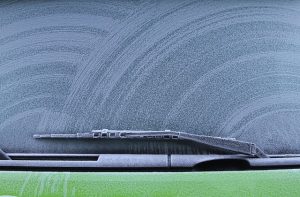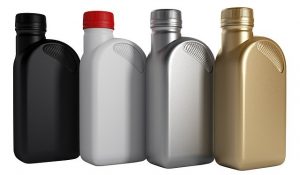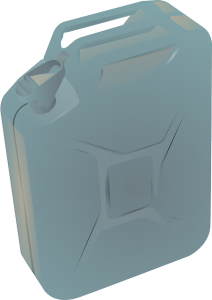-
05
Dec
16 Auto Transport Tips: On Transitioning Your Car from Fall to Winter

The seasons change inevitably. Summer soon turns to fall which turns to winter in just a few gasps. So before you face another season, make sure that you know the best steps to keep your car in tiptop shape.
Summer has a different blend of temperature, humidity, and conditions compared to autumn and winter. This is the reason why you should use the fall season to perfectly transition your car’s conditioning from the extremely warm season to extremely cold season.
Autumn is also the best time to keep a maintenance check on your car exteriors and interiors. It is not too warm and not too cold. So you would not be so bothered to stay outdoors to look under your car or over the hood.
We want you to be extra ready to face the winter months, which is the primary enemy of any vehicle. Use the autumn season to carefully check and condition your car for the extreme winter.
We have listed down some important things that will help you maintain your car’s health on your way to the colder months. Read on to know more about fall car maintenance tips:

Check your tires.
Whatever type of tires you are using; these must be kept in good condition. Autumn season is the best time to check your tires for tread wear. It is best to replace worn out tires with new ones to avoid accidents in the winter.
You can also interchange your tires so they can wear equally.
It is also advisable to check your tire pressure when these are cold. Do not check it after driving for it can affect the pressure reading.
Tire pressure also reduces by up to 2 pounds after around 10 degrees of change in temperature.
You can opt for snow tires if you are living in a snowy region. You can also buy tire chains if you are planning to go on harsher roads during ski vacations.

Inspect your brakes.
This is an important part of your fall car maintenance routine. Driving with worn out brakes increases your chances of damaging the brake rotor and getting into accidents.

Check your car for scratches and fix right away.
The cold components of winter such as ice, snow, sleet and cold rain, can seep into any crack on your car’s paint. This will eventually turn to rust, which is not good.
You can avoid expensive paint jobs by doing it yourself. You can purchase a repair kit for $30 more or less. You can use the kit to repair any blemish on your car’s paint in just a few minutes.
Of course, it would not be as good as a professional paint job but it will keep your car from becoming rusty.

Change your washer fluid.
Water obviously freezes during winter and you do not want that on your windshield. Opt for a winter washer fluid that would not freeze.

Replace your wipers.
Wipers wear easily. It is recommended to replace it every 6 months. Opt for rubber wipers in the winter months. It helps you keep the road visible during harsh road conditions.

Don’t hesitate to change your oil.
Do not be too strict when changing your oil. You do not need to hit a specific number of miles before you replace your engine oil. It is advisable to change it for at least twice a year.

Inspect car fluid levels.
Checking your fluid can be beneficial to your car because it can show signs of leaks or needed repairs.

Keep some winter gear in your car, just in case.
Summer is much easier than in the winter, in terms of emergency situations. You do not want to be shivering to death in your car while waiting for towing service.
The fall season is the best time to stash some winter gear and an emergency kit in your car. Your emergency stash may include a jacket or coat, some socks, gloves, a blanket, and a warm hat.
It is also useful to stock up some long shelf-life granola bars and bottles of drinking water.
It will also be helpful to have an ice scraper in handy when bad weather comes in suddenly.

Inspect your cooling and heating systems.
The heating and cooling systems are important for defrosting and for keeping your car interior comfortable.

Check the condition of your spare tire.
Isn’t it disappointing to have a flat tire only to discover that your spare tire is flat as well? Use this time to check the condition of your spare tire and inflate it according to suggested pressure.

Check if your lights are working.
During the winter, it will be mostly dark outdoors. It is crucial to keep all your lights working properly to avoid accidents.

Replace your car floor mats.
Unlike the earlier times, floor mats can now be customized (though more expensive than ordinary mats) perfectly according to your car’s floor. Therefore, it protects the car floor from any kind of spill and dirt more efficiently.
Most people use carpet mats for their cars, which is not recommended for winter. It stays damp and holds dirt.

Stock up on fuel.
It is important to keep your tank full during the winter to avoid being stuck on the road. One way to increase fuel efficiency is to tune up your vehicle, which increases the economy by up to 4%.
Fuel de-icer can keep moisture from freezing in the fuel line. It is also advisable to keep your tank filled during the cold months to prevent moisture formation.

Stock up on fuel.
It is important to keep your tank full during the winter to avoid being stuck on the road. One way to increase fuel efficiency is to tune up your vehicle, which increases the economy by up to 4%.
Fuel de-icer can keep moisture from freezing in the fuel line. It is also advisable to keep your tank filled during the cold months to prevent moisture formation.

Have your engine checked by a professional.
The autumn months are the best time to bring your car to a shop. Through this, a professional mechanic can thoroughly check the car’s overall performance.
Before the cold months hit, make sure to have your car repaired for drivability issues because the extreme weather can make these problems worse.

Wax and wash your car.
Fall is the best time to clean up your car. Remove dirt from your car’s surface through washing. It is also advisable to wax it every two months.
There you have it. We hope that we have given you some useful nuggets of information on how to keep your car in good condition even before the frigid winter hits.
If you like what you have read, please share this post with your friends and family. Simply click the social media buttons on this page.
For all of your auto shipping and household moving needs, we are Balch Logistics – your trusted auto transport broker. Keep in touch with us through our phone numbers, email address, and social media channels.







